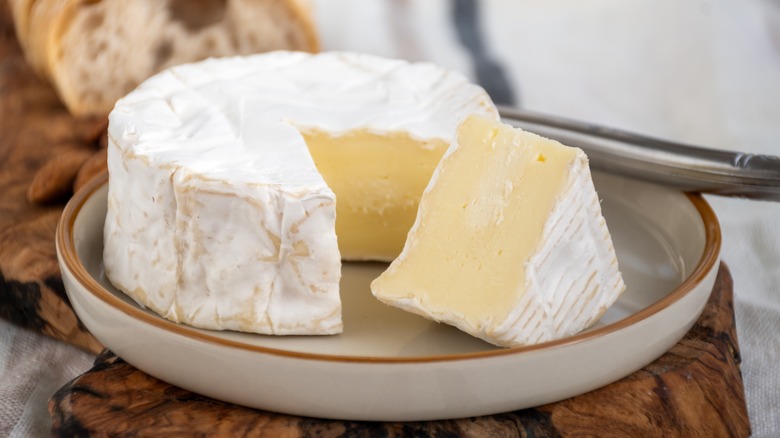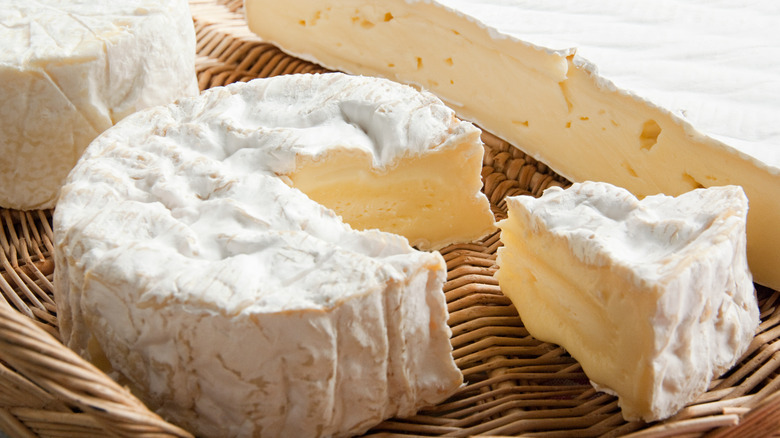Is It Safe To Eat A Brie Cheese Rind?
Cheese rinds are a perpetual source of confusion for many people as there isn't always a good way to tell which of the various types of cheese rind are edible and which aren't. It's true that some cheese rinds are, in fact, inedible and need to be removed before enjoying whatever delicious dairy is hidden inside, but that's not true for all or even most cheeses — hard or soft.
Most everybody loves brie cheese for its decadent, velvety mouthfeel and mildly nutty, salty flavor profile, but the rind of brie cheese isn't quite as universally beloved. That being said, it is perfectly edible and, more often than not, it's barely got any flavor to it at all. Some brie cheese rind will have a slight ammonia taste to them, which isn't great, but that's often a sign that the cheese has been ripened too much. It still won't hurt you, but people tend not to like the flavor.
Keep in mind that cheese can and does go bad eventually, and soft cheeses like brie are at a higher risk of unwanted mold growth because of their moisture content. Brie should be white or cream colored, so if you start to see some discoloration where blue, gray, or green comes in, then you are almost certainly going to want to throw the whole thing out. There are some minor exceptions where you might buy brie with a little bit of coloration, but if it wasn't there when you bought it, it shouldn't be there.
What exactly is in brie cheese rind?
Much of the confusion surrounding brie cheese rind has to do with the fact that it is mold growing on the cheese — but it's edible mold. Not only is it edible, it's essential to making brie cheese in the first place. Much like how fungi will lay dormant for a certain amount of time hidden beneath the surface before fruiting into the visible forms of fungi that we see on the surface, the bacteria added to brie cheese blossoms in the form of that soft, white outer texture.
Brie cheese is known as a soft ripened cheese (otherwise known as a bloomy rind) which you can identify by its signature fluffy white appearance on the outside. Soft ripened cheeses like brie and camembert are made by adding a specific type of bacteria, such as Penicillium candidum. The bacteria can either be sprayed onto the outside, where the bacteria will slowly work its way into the center, or it'll be added to the whole mixture. Either way, you get the signature white cheese rind.
To serve brie like an expert, definitely don't remove the rind. If anyone that's eating the cheese with you doesn't like the rind, you can let them peel it apart to get at the gooey interior, but it looks better with the rind intact. There are tons of ways to get creative with brie cheese, and you can leave the rind on for any of them.

